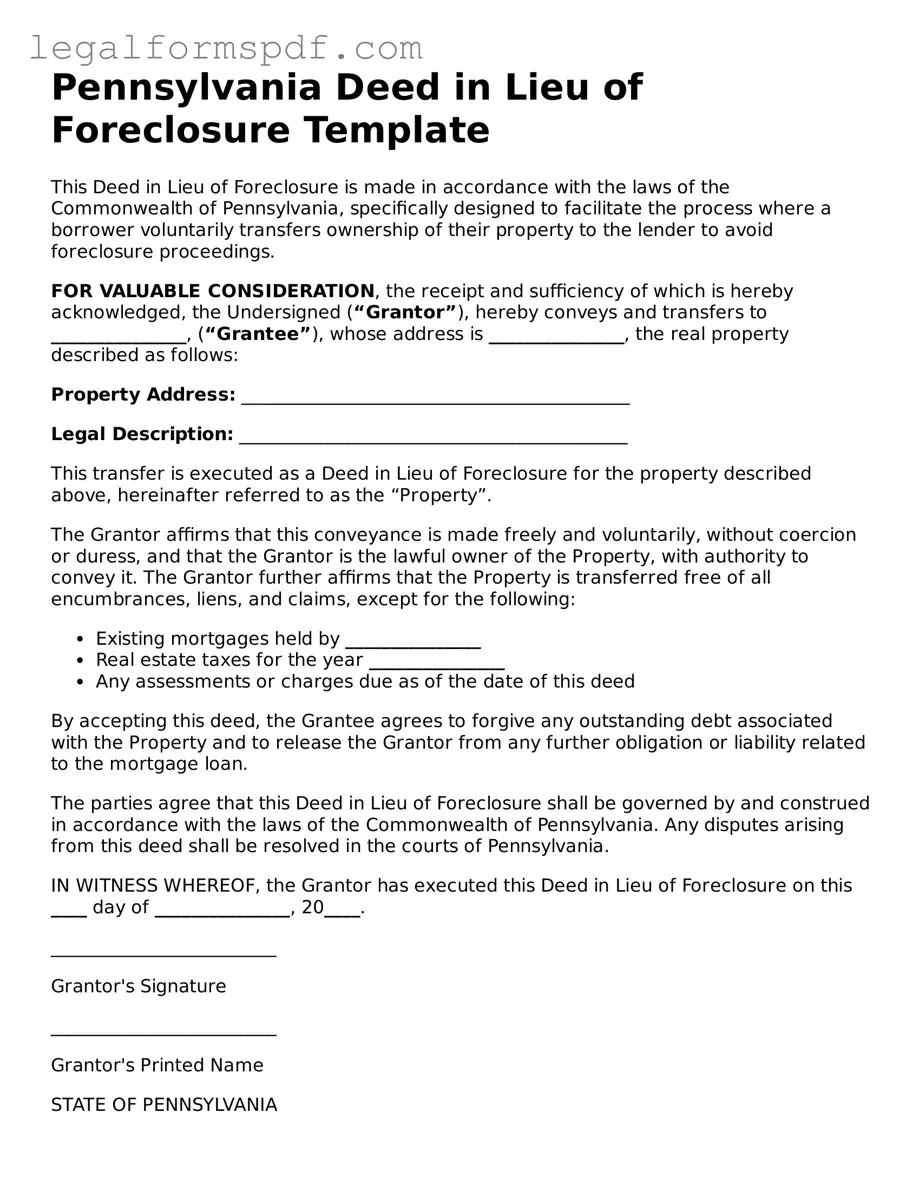Pennsylvania Deed in Lieu of Foreclosure Template
This Deed in Lieu of Foreclosure is made in accordance with the laws of the Commonwealth of Pennsylvania, specifically designed to facilitate the process where a borrower voluntarily transfers ownership of their property to the lender to avoid foreclosure proceedings.
FOR VALUABLE CONSIDERATION, the receipt and sufficiency of which is hereby acknowledged, the Undersigned (“Grantor”), hereby conveys and transfers to _______________, (“Grantee”), whose address is _______________, the real property described as follows:
Property Address: ___________________________________________
Legal Description: ___________________________________________
This transfer is executed as a Deed in Lieu of Foreclosure for the property described above, hereinafter referred to as the “Property”.
The Grantor affirms that this conveyance is made freely and voluntarily, without coercion or duress, and that the Grantor is the lawful owner of the Property, with authority to convey it. The Grantor further affirms that the Property is transferred free of all encumbrances, liens, and claims, except for the following:
- Existing mortgages held by _______________
- Real estate taxes for the year _______________
- Any assessments or charges due as of the date of this deed
By accepting this deed, the Grantee agrees to forgive any outstanding debt associated with the Property and to release the Grantor from any further obligation or liability related to the mortgage loan.
The parties agree that this Deed in Lieu of Foreclosure shall be governed by and construed in accordance with the laws of the Commonwealth of Pennsylvania. Any disputes arising from this deed shall be resolved in the courts of Pennsylvania.
IN WITNESS WHEREOF, the Grantor has executed this Deed in Lieu of Foreclosure on this ____ day of _______________, 20____.
_________________________
Grantor's Signature
_________________________
Grantor's Printed Name
STATE OF PENNSYLVANIA
COUNTY OF _______________
On this ____ day of _______________, 20____, before me, the undersigned officer, personally appeared _________________, known to me (or satisfactorily proven) to be the person whose name is subscribed to the within instrument, and acknowledged that they executed the same for the purposes therein contained.
In witness whereof, I hereunto set my hand and official seal.
_________________________
Notary Public
My Commission Expires: ____/____/____
